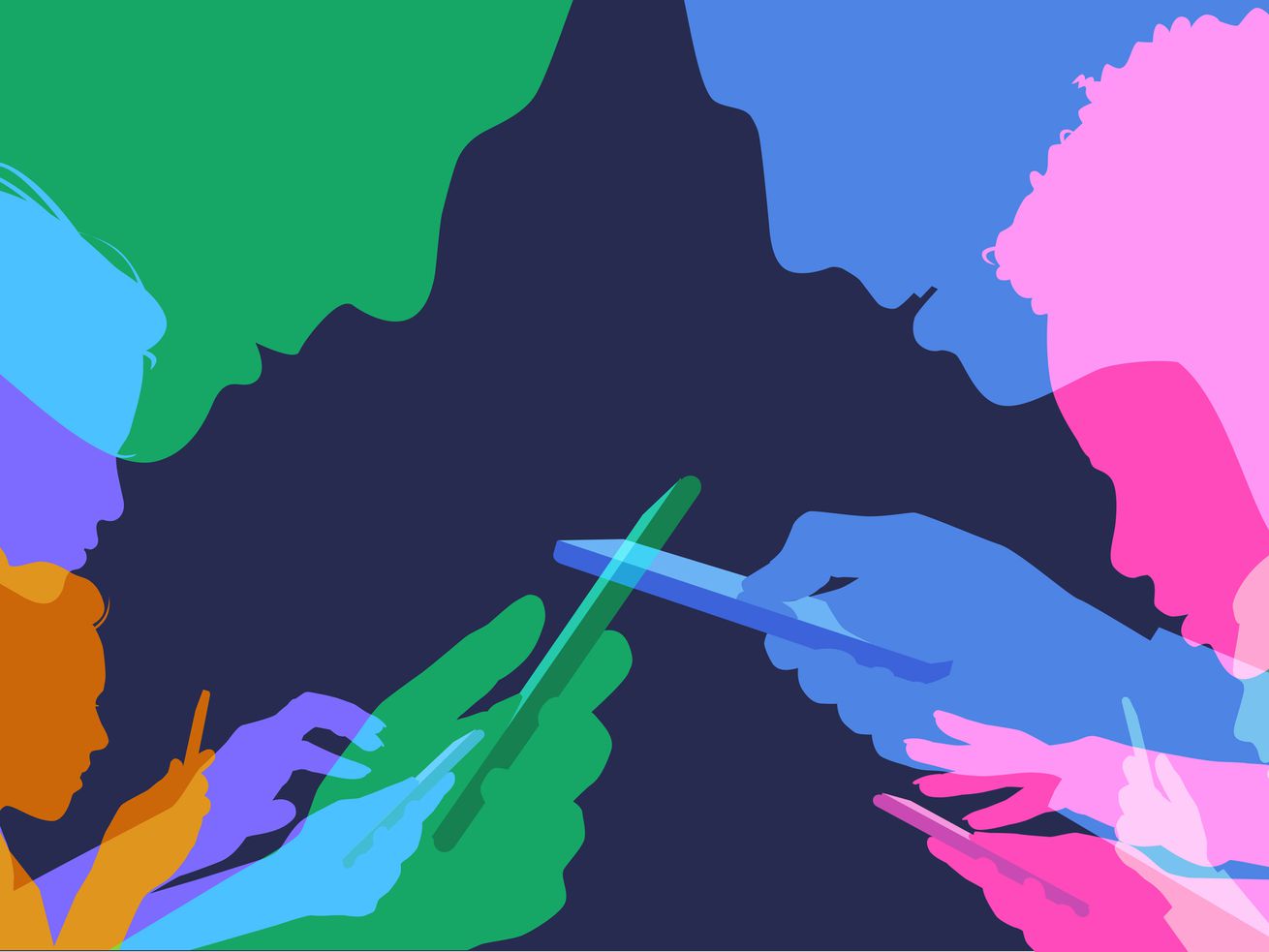Gaps in knowledge, particularly for creators from marginalized backgrounds, can equal gaps in pay.
I used to be a pint-sized Instagram creator. Before the era of ring lights and micro influencers and whatever hot girl culture is, I ran a food Instagram called @honeybrunches, where I would share VSCO-filtered scenes of brunch spreads, lopsided ice cream cones, and over-dressed kale salads. It was a seriously unserious venture until the end of 2017, when I flew past a thousand followers and began getting invited to things like yogurt brand launches and private cooking classes.
I produced a lot of free marketing collateral — social media posts, photos, articles that more or less functioned as sponsored content — because I thought I had to. I was a Latina teen and among the first in my family to have choices about things like college or what I wanted to be when I grew up, so to turn down or negotiate an opportunity meant, to my mind, another one might not pop up.
The whisperings I heard of brand deals and $5,000 contracts for a set of Instagram stories hovered just above me, something the only felt attainable with a college degree and a day job in marketing. So when a local supermarket chain reached out to me for a back-to-school collaboration and asked for my rate, I ghosted them. As cliché as it sounds, I didn’t know my worth. Nor did I know where to go to learn how to calculate it.
Fast forward four years later, and while the barriers of entry to social media are still just as low, the barriers to success continue to feel sky high. Sure, plenty of the influencers clogging our Explore and For You Pages are people who still can’t legally drink, but the savvy required to make it online is distinctly … corporate. Creators are drafting contracts, negotiating pay for nebulous freelance assignments, and sending stern follow-up emails — tasks I didn’t master until three years into college.
For those who grow up around upper-middle-class office jargon, the jump from regular person to marketable online celebrity is a bit more natural, and that divide can be felt along racial lines. Only 3.2 percent of executives and senior-level employees in the United States are Black, with the majority of corporate positions at America’s biggest companies still held by white people.
A report from SevenSix Agency, a UK-based influencer marketing agency with a focus on diversity and inclusion, found that 99 percent of BIPOC influencers who felt lowballed by collaborators cited their ethnicity as the reason why. Set against this backdrop, the wealth gap between white and nonwhite households transposes on to the creator economy, with white influencers much more likely to have a built-in network of lawyers, business managers, and accountants to support the business side of their hustle.
Just like how the child who’s a double legacy at Harvard has a leg up in college admissions, the same goes for the influencer born into privilege. White creators are better primed to know where to look in an industry that keeps details of social media algorithms, payouts, and influencer sponsorship deals secret. Meanwhile, BIPOC influencers are left to navigate a space that, despite promising a new chance at the American Dream, is a breeding ground for the same pay inequality and discrimination that contaminated virtually every other industry before it.
“More often than not, the conversation of privilege doesn’t play a role in a lot of the rhetoric that’s out there around Black creators and ethnic minorities within the [creator] space, but across the board, Black talent feel as though they have to work ten times harder, and the access they have to success is slim in comparison to their non-Black counterparts,” says Adesuwa Ajayi, a senior talent and partnerships lead at AGM and the creator of @influencerpaygap, a 59,000 follower-strong Instagram page where creators can anonymously detail their highest — or lowest — paid gig.
Though inactive since March, @influencerpaygap is filled with horror stories. One Black fashion influencer details a $250 3-month contract with a fashion brand for monthly content shoots across TikTok, Instagram, and the brand’s website. Another recounts an offer from Crocs that asks for Instagram Reels and grid posts in exchange for a pair of clogs. Others reveal patterns, with major fashion brands like Fashion Nova, Zaful, and Shein paying influencers in clothes for materials that comprise the majority of their social media marketing.
Ajayi hopes the page injects transparency into the creator economy and enables influencers to make fair comparisons between themselves and others in their market who are often working with similar brands and agencies.
“A big thing for me was really identifying how much of a gap in knowledge there was,” she says. “A lot of people tend to feel like the higher up you are, the more you know, and it’s not always the case. There’s talent with significant influence who are still learning what they are worth in terms of pay and how to navigate contracts and the business side of things.”
Keith Dorsey is the CEO of Young Guns Entertainment, an Atlanta-based creative marketing agency that manages a suite of emerging Black social media talent. He runs Collab Crib, TikTok’s first Black content house and the subject of a New York Times documentary, and soon, a Facebook Watch reality series. The collective — which includes stars like Kaelyn Kastle, Theo Wissseh, and Khmayra Sikes — has a joint reach of upward of 30 million total followers and juggles brand partnerships and an upcoming skin care line alongside their daily stream of content that mixes performance, comedy, and riffs on TikTok trends.
For Collab Crib, a sponsored content deal that involves all nine members of the house creating a unique post on their TikTok accounts can start at $50,000, which works out to about $5,000 per creator once Keith takes his cut. By comparison, Addison Rae is said to earn over $69,000 per sponsored Instagram post, while the Clubhouse Beverly Hills (an L.A-based content house that features a rotating cast of pretty people) can rake in about $1.3 million for group content.
“I’ll overhear managers say they charged $40,000 for one person. Meanwhile, we’re splitting $40,000. That doesn’t make any sense,” says Dorsey, who is now furnishing Collab Crib’s 9,000-square-foot house out of pocket after a home furnishing company declined to work with them, citing contrasting demographics. “As I’m learning, there’s a lot more money that has to be made, and a lot of that stems from untapped knowledge.”
On their face, the big pay disparities between marquee mainstream TikTok content houses and Collab Crib make sense. The Hype House is inarguably more famous, with a brand that’s approachable and aspirational, so of course they’d make more money.
However, their fame stems from an algorithm that may favor white creators, with TikTok facing consistent charges of racial bias in its algorithm and content moderation. For every Shawn Mendes and Dixie D’Amelio, there are hundreds of other creators who get stuck on the path to mainstream success, in some cases bogged down by predatory managers and a lack of mental health resources as fame ebbs and flows. And just like with every other job title that promises a shot at overnight wealth — entrepreneur, actor, consultant — those who have to overcome institutional barriers will still be playing catch up.
“If the most popular creators on a platform are white, and the app keeps recommending other white creators, it makes it hard for creators of color to gain a following,” writes BuzzFeed’s Lauren Strapagiel of TikTok’s filtering practices, which recommends new accounts based on the accounts someone you follow follows. This leaves BIPOC creators working around an algorithm that doesn’t seem to prioritize them to mainstream audiences. Case in point: In the New York Times documentary, Collab Crib’s Kaelyn Castle said she dyed her hair bright pink after hearing the algorithm favored bright colors, and saw engagement numbers increase.
“All these new adversities keep piling up [on TikTok] against Black women, so there’s certain things that need to be done in order to be seen,” she tells me before mentioning that she plans to go blonde after seeing a dip in traction. “It sucks.” Kastle says her content is often shadowbanned or removed for violating community guidelines, even if it follows the same anodyne diet of dance trends and tasteful thirst traps that turned content houses like Clubhouse Beverly Hills into household names.
Ultimately, the systemic biases built into the structure of social media create a feedback loop that deepens the gap between white and BIPOC creators. The majority of @influencerpaygap posts detail the experiences of minority creators who worked with big brands for free because of the exposure it offered, hoping that a shot at a larger audience could catapult them into a new stratosphere.
“Even for a 30-minute Instagram Live, I have to go through 15 emails of back and forth trying to convince you to pay either myself or Elyse to have this conversation with you. That is time and energy,” says Brianna Patrice, the co-founder of Sad Girls Club, a mental health nonprofit serving Black youth that saw an uptick in social media attention following the murder of George Floyd. “Because I’m a Black woman specifically, you want to say, ‘Well, I’m gonna pay you in exposure.’ Exposure is not putting food on my table and keeping the lights on.”
The Covid-19 pandemic is setting the stage for greater wealth inequality in the future. Per a recent report from the Center for American Progress, the average Black household held only 14.5 percent of the wealth of the average white household in 2019 — and we can expect that share to decrease as Black homeworkers were over four times more likely to fall behind on their mortgages and 12.1 percent more likely to borrow money to deal with emergency expenses than their white counterparts.
These conditions replicate in seemingly small ways, too. Prior to the pandemic, Black people were unbanked at a rate five times higher than that of white people, and the average Black household has only $1,300 in liquid savings compared with $7,850 for white households. To put it plainly: the majority of Black households in the United States exist in an environment of scarcity, of always saving and yearning, and of dreaming for solutions to systems built to fail them.
Set against this backdrop, the stakes are high for many young Black creators. “I really just want to create generational wealth for my family because I don’t want to see my mom working no more. I really just want to be that person that my family looks up to,” said Tray Bills, a 25-year-old social media creator and inaugural Collab Crib member with 1.1 million TikTok followers in the Times’s “Who Gets to Be an Influencer” documentary.
“A lot of Black creators use [social media] as a survival mechanism to eat. They don’t have anything else,” says Dorsey. “A lot of them don’t come from families where they have financial accounts set up for them or financial backing or money sitting in the bank. They use this as a way out.”
Influencer burnout, the all-encompassing pressure to strike viral gold or fade into obscurity, permeates creator circles of all sizes. In the 2010s, colossal YouTubers from PewDiePie to Alissa Marie took breaks from the platform after feeling drained from keeping up with an algorithm they didn’t understand. On TikTok, proximity breeds paranoia, as mid-sized personalities juggle the need for enough attention to pay the bills and the fear of cancellation. Hell, even Charli D’Amelio has bad days.
“I have to take everything I do way more seriously now because I’m actually a celebrity who’s constantly looked at and judged. … Everything I do needs to contribute towards me in a positive way, and not hold me back or risk my reputation,” says Noah Webster, a Collab Crib member.
Pursuing social media full-time is anxiety-inducing for even the most mythic creators. But for Black creators chasing financial freedom in an industry that rewards privilege, that anxiety can mutate into something deeper: a self-limiting fear.
“When you’re focused on freedom, there’s a pressure placed on creativity that goes beyond simply a matter of ‘I just want to create.’ So when you’re then dealing with situations around pay, it then becomes really tricky to respond to opportunities that aren’t right for you,” says Ajayi. “You’re thinking of other things than others who are solely focused clout aren’t thinking about. You’re thinking, ‘This is something that I really want to become my bread and butter. And if I say no to this, what else will come my way?’ There comes a point where, even though it’s not easy, we need to be okay saying no to opportunities that don’t respect the time and effort we put into our crafts.”
For her, the key to reaching that involves transparency, something the creator economy lacks as it spawns a cottage industry of marketing courses, managers, and accountants.
Though YouTube, Twitch, and TikTok all have built-in monetization plans where creators are paid based on views, engagement, and advertising revenue, the formulas behind these programs are deliberately opaque. The Creator Fund, TikTok’s billion-dollar initiative to compensate creators for driving engagement on the platform, calculates payouts based on a mix of metrics ranging from views to geography. This means each creator’s rate is different, with some earning between 2 and 4 cents per thousand views.
Sponsored content isn’t any more straightforward. As Ajayi and @influencerpaygap demonstrate, brand deals aren’t consistent among each company, and there’s no clear formula for how to actually determine what clout is worth. Webster, the creator managed by Dorsey, tells me every 10,000 views equates to $1,000, while Neal Schafer, the founder of digital marketing consultancy PDCA and a professor at Rutgers, recommends using rate calculators that adjust for platform and engagement variables.
That said, the expanse of the internet won’t be a black box forever. Two subscription-based startups for creators to hawk premium content — Fanhouse and Fanbase — are baking in feedback mechanisms as they move into the mainstream. Fanhouse, which operates as an OnlyFans-finsta hybrid that pays 90 percent of earnings out to creators, invites all users who’ve made $30 on the platform to a group chat where creators can talk shop.
As for Fanbase, the company announced the formation of a creator advisory board. A council of 25 social media creators that includes both Dorsey and Webster, as well as Renegade choreographer Jaliah Harmon, the group will advise the platform as it builds its short-form video editor and continues to improve its monetization strategy. Fanbase is unique in the sense that financial freedom is explicitly tied to its mission. The company crowdsourced small-dollar investments from over 5,200 people in exchange for equity in the platform, and hopes to continue finding ways to explore long-term monetization strategies for creators beyond their content.
“Addison and Charli don’t mind giving their content away for two reasons. One, they primarily don’t create the choreography they use in their videos. Two, they don’t make the records they dance to,” says Isaac Hayes III, Fanbase’s founder. “That’s why I tell every user — especially Black creators — to start monetizing their content immediately.”
Author: Beatrice Forman
Read More



